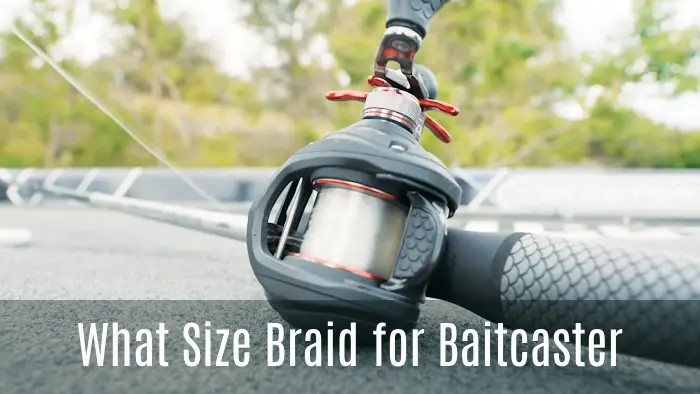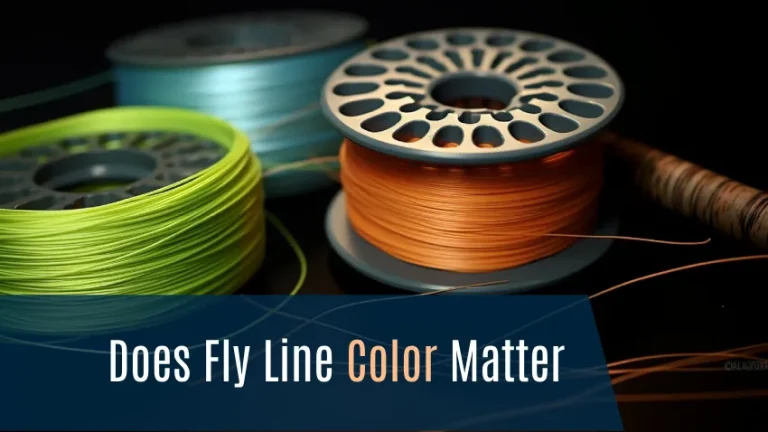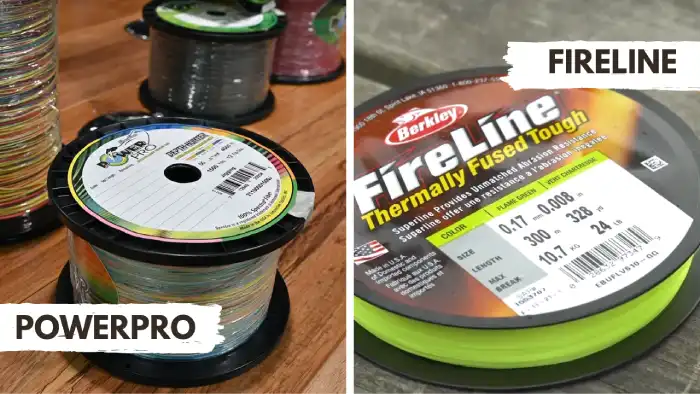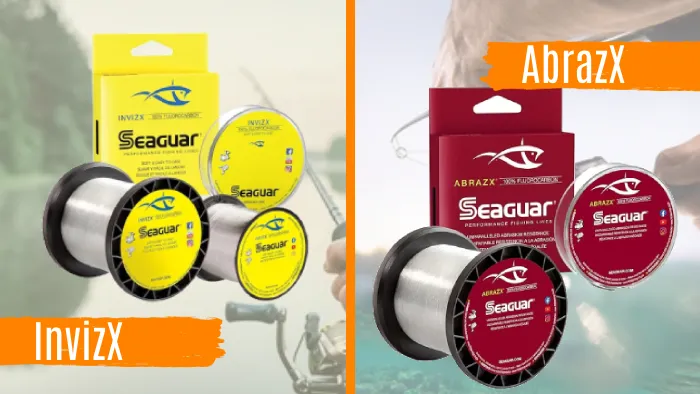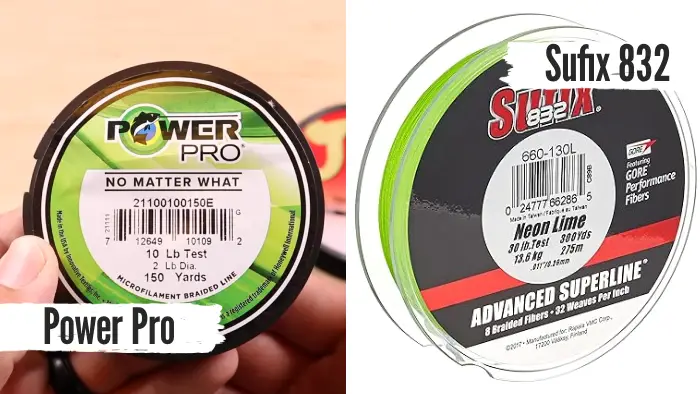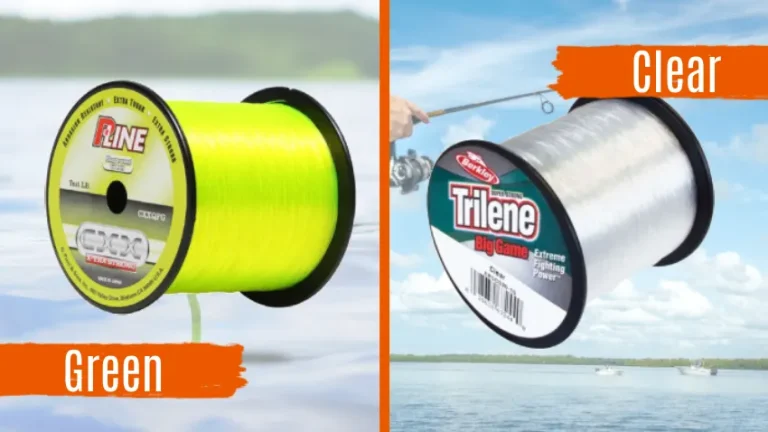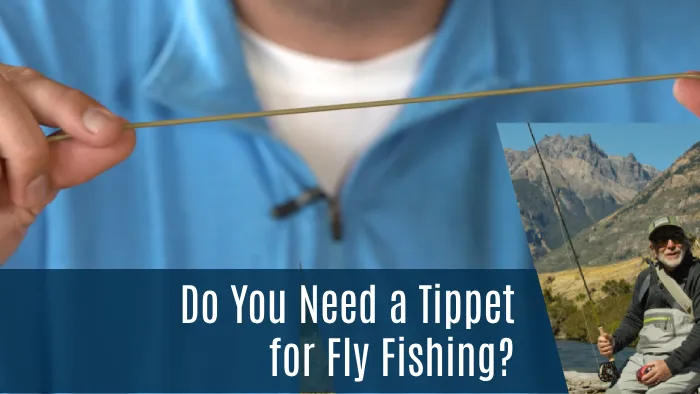What Size Braid for Baitcaster | Get the Right Measurement
Choosing the proper fishing line is crucial to your bait caster’s success. One of the main factors to consider when choosing a braid is the size, as it can affect your reel’s sensitivity, strength, and spool capacity.
To determine the appropriate size braid for your bait caster, consider using a range from 20 to 50 pounds. This range provides the necessary strength and durability for effectively casting and reeling your bait. If you opt for a braid under 20 pounds, you may sacrifice sensitivity, which is crucial for detecting subtle bites.
However, you should avoid using a too-thin line, as it can dig into the spool when battling big fish or getting snagged. This can lead to knots and tangles, ultimately hindering your fishing experience.
With the help of this article, we’ll explore the factors to consider when picking braid sizes. We’ll also share expert tips to help you select the perfect braid. So, keep reading to level up your fishing skills.
What to Remember When Choosing a Braid Size for a Baitcaster?
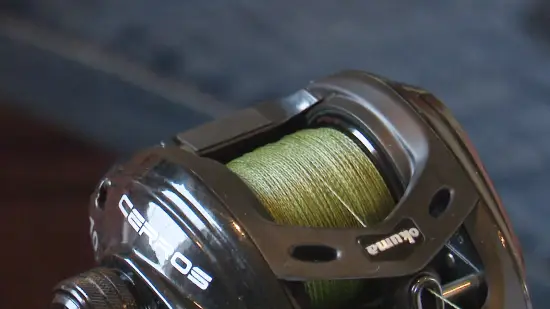
When choosing a braid size for your baitcaster, several important factors must be considered.
- Fishing conditions
- Line strength (lb test)
- Line diameter
- Line sensitivity
- Abrasion resistance
- Casting distance and accuracy
- Knot strength
- Reel capacity
1. Fishing Conditions
When choosing a braid size for your bait caster, consider the fishing conditions you’ll face. Different conditions can greatly impact the performance of your braid and ultimately affect your fishing success. Here are some factors to consider:
- Water Type:
- Freshwater: Opt for a lighter braid size such as a 20-30 pound test for fishing for finesse or targeting smaller species.
- Saltwater: Choose a heavier braid size such as 30-50 pound test, to handle the larger and more aggressive saltwater species.
- Cover and Structure:
- Heavy Cover: If you anticipate fishing in areas with thick vegetation or structure, consider a heavier braid size to prevent break-offs.
- Open Water: You can use a lighter braid size to maximize casting distance and sensitivity for open water fishing with fewer obstructions.
2. Line Strength (lb test)
Consider the appropriate line strength (lb test) for your baitcaster by selecting a braid size that matches the expected strength requirements for your target fish.
The pound test refers to the weight the line can handle before breaking. Different fish species have different strength requirements, so match your line strength to your target fish.
For example, if you’re targeting larger, stronger fish like bass or pike, you’ll need a higher-pound test line to withstand their powerful runs and aggressive fighting. On the other hand, if you’re targeting smaller fish like panfish or trout, a lower-pound test line will be sufficient.
3. Line Diameter
The line diameter is also important when choosing a braid size for your bait caster. Here are two key points to keep in mind:
- Thin Diameter: Braid is known for its thin diameter relative to its strength. A thinner line has less water resistance and can effectively cut through vegetation. This is especially beneficial when fly fishing in Maine or other places with much cover or casting long distances.
- Abrasion Resistance: However, note that thinner braids may have lower abrasion resistance. If you’re fishing in rocky or abrasive areas, opt for a slightly thicker braid to ensure it can withstand rough conditions and prevent line breakage.
4. Line Sensitivity
Enhance your bait caster’s sensitivity by selecting a braid size that maximizes line feel and bite detection. When braiding your baitcaster, consider line sensitivity a crucial factor.
Thinner braids offer increased sensitivity due to their reduced diameter. The sensitivity of a braid line allows you to detect even the slightest bites, making it easier to react quickly and set the hook. This is particularly beneficial when fishing in areas with heavy cover or structure, where subtle strikes can easily go unnoticed.
5. Abrasion Resistance
When deciding on a braid size for your baitcaster, frequently assess the abrasion resistance as a key factor in your decision-making process. The abrasion resistance of the braid is crucial because it determines how well the line can withstand rough conditions and avoid unnecessary damage.
Here are two factors to consider when evaluating the abrasion resistance of a braid size:
- Material: Different materials have varying levels of abrasion resistance. Braids made from high-quality materials like Dyneema or Spectra tend to have excellent abrasion resistance.
- Coating: Some braids come with a protective coating that enhances their resistance to abrasion. Coated braids are more durable and can withstand friction against rough surfaces.
6. Casting Distance and Accuracy
Smaller diameter braids generally cast farther due to reduced air resistance, making them an ideal choice if long casts are important to you. Thinner braids can help you achieve greater distances.
However, extremely thin braids may be more challenging to control during casting. Thicker braids, on the other hand, may sacrifice some casting distance but offer better control and accuracy.
7. Knot Strength
Ensure that the strength of your knots is considered when selecting the braid size for your baitcaster. Knot strength is crucial for maintaining the integrity of your fishing line and preventing breakage during casts and retrieves.
When choosing a braid size, consider the type of knots you typically use and their compatibility with the braid material. Some knots, such as the Palomar or Uni knot, work well with braided lines due to their ability to grip the smooth texture of the braid.
However, other knots may struggle to hold securely on certain braid sizes, leading to potential slippage and weakened connections.
8. Reel Capacity
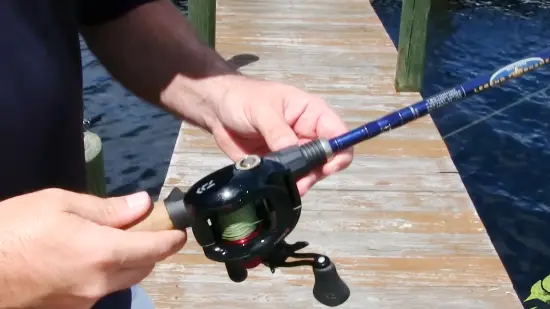
When selecting a braid size for your baitcaster, consider the reel’s capacity to hold the line. The reel’s capacity refers to the maximum line the reel can hold. To determine the appropriate braid size based on reel capacity, consider the following:
- Check the specifications of your baitcaster reel: Look for information on the reel’s line capacity, usually denoted in yards or meters.
- Calculate the amount of line needed: Consider the type of fishing you’ll be doing and the target species. This will help you determine the amount of line you’ll need to fish in different situations adequately.
- Choose a braid size that fits within the reel’s capacity: Based on the line capacity of your reel and the amount of lines you need, select a braid size that allows you to have enough lines on your reel without exceeding its capacity.
Expert Tips for Choosing the Perfect Braid for Baitcaster
- A lighter braided line is more effective for casting with spinning gear.
- A braided line is effective for sensitivity with spinning gear.
- Using a 10 or 15-pound braid on a baitcasting reel is not recommended, as it can dig into the spool.
- Thin diameter braids can snap and dig into the spool, causing problems.
- For inshore fishing with baitcasting reels, it’s advisable to use at least a 20-pound braid.
- Transitioning from spinning gear with light braid to baitcasting reels can lead to issues if you stick with the same light line.
- Saltstrong is an online fishing club for saltwater anglers that offers fish-catching tips and gear discounts.
Can I put a 30 lb braid fishing line on a 20 lb reel?
You can use a 30 lb braid line on a 20 lb reel. However, there are a few things you need to consider.
The reel won’t hold as much line when using a heavier braid. You may need to spool less line onto the reel or risk overfilling it. Less line capacity can be a disadvantage if you’re targeting larger fish requiring longer runs or making longer casts.
Using 30 lb braid on a 20 lb reel may affect your casting distance. The thicker and heavier line can create more resistance in the air, resulting in shorter casts than using a lighter line. If casting distance is crucial for your fishing style, consider using a lighter braid or adjusting your casting technique.
How big of a fish can a 20lb braid hold on a bait caster?
With 20lb braid on your bait caster, you can confidently handle fish of considerable size. While the line strength is important, consider your fishing techniques and the type of fish you’re targeting.
A 20lb braid is strong enough to handle medium-sized fish such as crappie, bonefish, flounder, and smaller species of snapper like lane or mangrove snapper. These fish typically range from a few pounds to 10-15 pounds.
However, the fighting capabilities of different fish species can vary, and larger, more aggressive fish may put up a tougher fight. In such cases, you must have proper drag settings, a sturdy rod, and good angling skills to successfully land the fish without risking line breakage.
Is a 20lb braid good for bass for Baitcaster?
Although it depends on the specific situation, in general, a 20lb braid can be a good choice for bass fishing with a baitcaster.
The break strength of a 20lb braid is much higher than the label suggests, so it is more appropriate to think of it as having a break strength of 40-50 pounds. This means that you don’t need to go super heavy to have enough strength to handle most bass.
Choose the Perfect Braid Size for Your Baitcaster
Selecting the right braid size for your baitcaster is essential for a successful fishing trip. As a general guideline, lines ranging from 20 to 50 pounds are most commonly used due to their strength and sensitivity.
However, when selecting your braid size, consider the fishing conditions and the type of fish you’re targeting. Expert anglers suggest using a braid size that matches the strength of the rod and reel combo, typically ranging from 20 to 30 lb.
While a 20 lb reel can handle 30 lb braid, ensuring the reel’s drag system can handle the extra strength is essential. Ultimately, the right braid size will enhance your fishing experience and increase your chances of landing that big catch.

